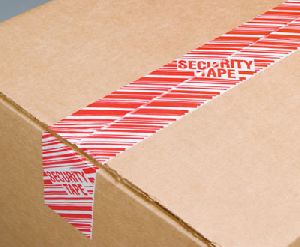
Temper Proof Tapes
Tampering involves the deliberate altering or adulteration of information, a product, a package, or system. Solutions may involve all phases of product production, distribution, logistics, sale, and use. No single solution can be considered as "tamper proof". Often multiple levels of security need to be addressed to reduce the risk of tampering. Identify who a potential tamperer might be and what level of knowledge, materials, tools, etc. might they have. Identify all feasible methods of unauthorized access into a product, package, or system. In addition to the primary means of entry, also consider secondary or "back door" methods.Control or limit access to products or systems of interest. Improve the tamper resistance by making tampering more difficult, time-consuming, etc. Add tamper-evident features to help indicate the existence of tampering. Educate people to watch for evidence of tampering. Length of time available for tampering. Particularly in transit, anyone intending to tamper with tamper-evident-protected goods, valuables, cash and confidential documents generally only has a window of opportunity of a few minutes before discovery is likely. This makes it both difficult and unlikely that they will have time to open the packaging, examine or remove the items, and restore the packaging to its original untampered condition.
...more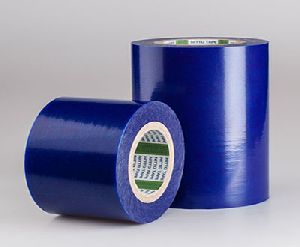
Surface Protection Tapes
In order to protect surface from dirt, scratch and moisture, the offered Surface Protection Tapes are used for coating panels during transportation and storage. These tapes are highly cherished among customers due to their excellent strength, high adhesiveness and tear resistant attributes.Surface Protection Tapes provide residue-free protection for any surface, whether painted, mill finished, or polished. Use on stainless steel, glass, aluminum, coated metals, and plastics. Our tapes are durable and offer excellent indoor and outdoor performance.
...more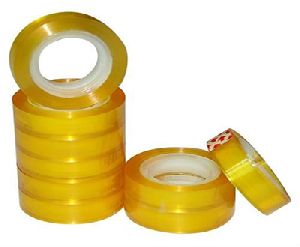
Stationery Tapes
Originally the term stationery referred to all products sold by a stationer, whose name indicated that his book shop was on a fixed spot, usually near a university, and permanent, while medieval trading was mainly carried on by itinerant peddlers (including chapmen, who sold books) and others (such as farmers and craftsmen) at markets and fairs. It was a special term used between the 13th and 15th centuries in the manuscript culture. The Stationers' Company formerly held a monopoly over the publishing industry in England and was responsible for copyright regulations. In its modern sense including personal writing materials, stationery has been an important part of good social etiquette, particularly since the Victorian era. Some uses of stationery, such as sending a manufactured reply card to a wedding invitation, have changed from offensive to appropriate.
...more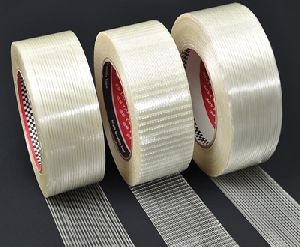
Reinforced and Filament Tapes
Filament tape or strapping tape is a pressure-sensitive tape used for several packaging functions such as closing corrugated fiberboard boxes, reinforcing packages, bundling items, pallet unitizing, etc. It consists of a pressure-sensitive adhesive coated onto a backing material which is usually a polypropylene or polyester film and fiberglass filaments embedded to add high tensile strength. It was invented in 1946 by Cyrus W. Bemmels, a scientist working for Johnson and Johnson. A variety of grades of filament tape are available. Some have as much as 600 pounds of tensile strength per inch of width. Different types and grades of adhesive are also available.Most often, the tape is 12 mm (approx. 1/2 inch) to 24 mm (approx. 1 inch) wide, but it is also used in other widths. A variety of strengths, calipers, and adhesive formulations are available.
...more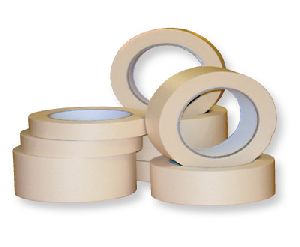
Masking Tapes
Masking tape, also known as painter's tape, is a type of pressure-sensitive tape made of a thin and easy-to-tear paper, and an easily released pressure-sensitive adhesive. It is available in a variety of widths. It is used mainly in painting, to mask off areas that should not be painted. The adhesive is the key element to its usefulness, as it allows the tape to be easily removed without leaving residue or damaging the surface to which it is applied. The tape is available in several strengths, rated on a 1–100 scale based on the strength of the adhesive. Most painting operations will require a tape in the 50 range. Household masking tape is made of an even weaker paper and lower-grade adhesive.
...more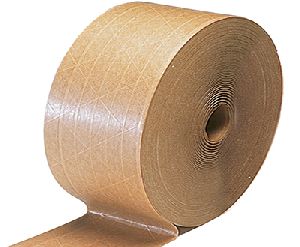
Kraft Paper Tapes
A piece of kraft paper Kraft paper or kraft is paper or paperboard (cardboard) produced from chemical pulp produced in the kraft process. Sack kraft paper, or just sack paper, is a porous kraft paper with high elasticity and high tear resistance, designed for packaging products with high demands for strength and durability.Pulp produced by the kraft process is stronger than that made by other pulping processes; acidic sulfite processes degrade cellulose more, leading to weaker fibers, and mechanical pulping processes leave most of the lignin with the fibers, whereas kraft pulping removes most of the lignin present originally in the wood. Low lignin is important to the resulting strength of the paper, as the hydrophobic nature of lignin interferes with the formation of the hydrogen bonds between cellulose (and hemicellulose) in the fibers. Kraft pulp is darker than other wood pulps, but it can be bleached to make very white pulp. Fully bleached kraft pulp is used to make high quality paper where strength, whiteness and resistance to yellowing are important.
...more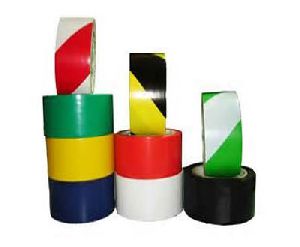
Floor Marking Tapes
Floor marking tapes are adhesive tapes used to mark hazards, divide spaces, create aisles, or provide directions. They are commonly used in industrial and manufacturing facilities for floor marking. They are made of multiple different materials, including PVC and vinyl, and vary in thickness from 5-mils to 55-mils for a wide range of durability options for manufacturing facility floor marking. The best floor marking tapes are usually 50 to 60 mils thick. Most tapes come in a variety of color options and even hazard patterns to meet U.S. Occupational Safety and Health Administration/ANSI requirements and other safety standards. Some tapes are made with higher reflectivity and may even glow in the dark.Floor marking tapes can also be useful for helping workers put materials and equipment back in the right place, making it a key 5S, Lean manufacturing implementation tools. Creating distinctions between finished goods, raw goods, to-be-repaired goods, and equipment ensures mistakes are minimized and productivity and safety are both at the highest levels.
...more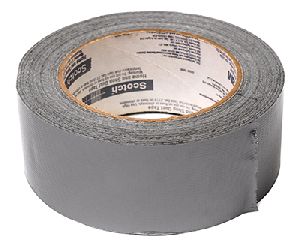
Duct Tapes
Duct tape, or duck tape, is cloth- or scrim-backed pressure-sensitive tape, often coated with polyethylene. There are a variety of constructions using different backings and adhesives. One variation is black gaffer tape, which is designed to be non-reflective and cleanly removed, unlike standard duct tape. Another variation is heat-resistant foil (not cloth) duct tape useful for sealing heating and cooling ducts, produced because standard duct tape fails quickly when used on heating ducts. Duct tape is generally silvery gray, but also available in other colors and even printed designs.During World War II, Revolite (then a division of Johnson & Johnson) developed an adhesive tape made from a rubber-based adhesive applied to a durable duck cloth backing. This tape resisted water and was used as sealing tape on some ammunition cases during that period.
...more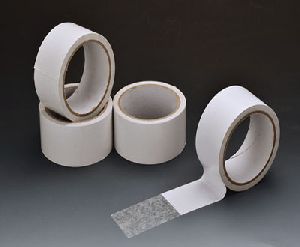
Double Sided Tapes-Tissue
Double-sided tape Tissue is any pressure-sensitive tape that is coated with adhesive on both sides. It is designed to stick two surfaces together, often in a way which is not visible in the end product, due to it being in between the objects rather than overlaying them. This allows for neater-looking projects and better craftsmanship. Double-sided tape Tissue can be either thin or dimensional. Dimensional tape is thicker, and is of particular use to retail and signage uses where it can be used to allow signs or displays to stand out with a 3-D effect.Double-sided tape Tissue is created by applying a thin adhesive layer to each side of a carrier material. For example, double-sided tissue tape Tissue, an easy-to-rip double-sided tape, is created by applying adhesive to two sides of tissue paper, which is then wound with a siliconed paper to avoid it sticking to itself. Most adhesive tapes are manufactured in log form, such as a large 1 to 3 meter wide roll, and then an adhesive tape converter is used to slit the rolls into the required widths.
...more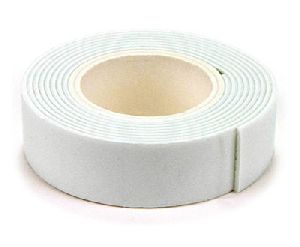
Double Sided Tapes-Foam
Double-sided tape Foam is any pressure-sensitive tape that is coated with adhesive on both sides. It is designed to stick two surfaces together, often in a way which is not visible in the end product, due to it being in between the objects rather than overlaying them. This allows for neater-looking projects and better craftsmanship. Double-sided tape Foam can be either thin or dimensional. Dimensional tape is thicker, and is of particular use to retail and signage uses where it can be used to allow signs or displays to stand out with a 3-D effect.Double-sided tape Foam is created by applying a thin adhesive layer to each side of a carrier material. For example, double-sided Foam tape Foam, an easy-to-rip double-sided tape, is created by applying adhesive to two sides of Foam paper, which is then wound with a siliconed paper to avoid it sticking to itself. Most adhesive tapes are manufactured in log form, such as a large 1 to 3 meter wide roll, and then an adhesive tape converter is used to slit the rolls into the required widths.
...more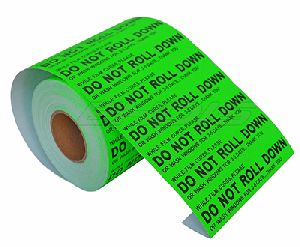
Branded Shelf Strips/Advertising
Branded Shelf Strips/Advertising & Promotional Tapes For effectively design to the varied needs of our customers, we are vastly affianced in providing a comprehensive spectrum of Shelf Strip to our patrons. Our products are highly applauded in the industry for their unmatched quality standards. To deliver a flawless and defect free consignments to the customers, our products are strictly tested on predefined level of quality parameters.Many Branded Shelf Strips/Advertising & Promotional Tapes adhesive tapes exhibit triboluminescence, observable in a dark room, when peeled off a dispenser roll or other surface.
...more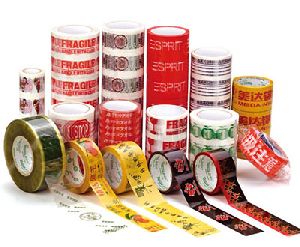
BOPP Self Adhesive Tapes-Printed/Customised
BOPP Self Adhesive Tapes-Printed/Customised refers to any one of a variety of combinations of backing materials coated with an adhesive. Different backing materials and adhesives can be used depending on the intended use. BOPP Self Adhesive Tapes-Printed/Customised, PSA tape, self-stick tape or sticky tape consists of a pressure-sensitive adhesive coated onto a backing material such as paper, plastic film, cloth, or metal foil. It is sticky (tacky) without any heat or solvent for activation and adheres with light pressure. These tapes usually require a release agent on their backing or a release liner to cover the adhesive. Sometimes, the term "adhesive tape" is used for these tapes. Many pressure-sensitive adhesive tapes exhibit triboluminescence, observable in a dark room, when peeled off a dispenser roll or other surface.The adhesiveness of the tape does depend not only on the type of the tape but also on its macroscopic shape. Tapes with sharp corners start to detach at pointed corners. The adhesive strength can be sufficiently improved by cutting the edges as shown in the film.
...more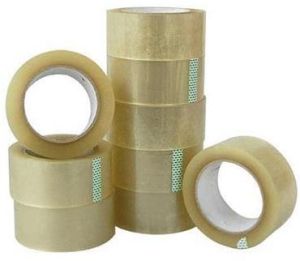
BOPP Self Adhesive Tapes-Plain
BOPP Self Adhesive Tapes-Plain refers to any one of a variety of combinations of backing materials coated with an adhesive. Different backing materials and adhesives can be used depending on the intended use. BOPP Self Adhesive Tapes, PSA tape, self-stick tape or sticky tape consists of a pressure-sensitive adhesive coated onto a backing material such as paper, plastic film, cloth, or metal foil. It is sticky (tacky) without any heat or solvent for activation and adheres with light pressure. These tapes usually require a release agent on their backing or a release liner to cover the adhesive. Sometimes, the term "adhesive tape" is used for these tapes. Many pressure-sensitive adhesive tapes exhibit triboluminescence, observable in a dark room, when peeled off a dispenser roll or other surface.The adhesiveness of the tape does depend not only on the type of the tape but also on its macroscopic shape. Tapes with sharp corners start to detach at pointed corners. The adhesive strength can be sufficiently improved by cutting the edges as shown in the film.
...more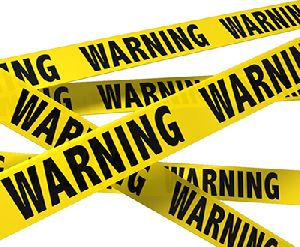
Berry Cading/Warning Tapes
Barricade tape is brightly colored tape (often incorporating a two-tone pattern of alternating yellow-black or red-white stripes or the words "Caution" or "Danger" in prominent lettering) that is used to warn or catch the attention of passersby of an area or situation containing a possible hazard. It acts as a minor impediment to prevent accidental entrance to that area or situation and as a result enhances general safety. Barricade tape is also known as construction tape or barrier tape or in reference to the safety hazard involved as notice tape, caution tape, warning tape, danger tape or hazard tape. In case the tape is used by an organization the tape is named police tape, firefighter tape or traffic control device tape.The tape is often wrapped and affixed as a visual warning sign and demarcation, for instance against entering a dangerous area, such as an industrial or commercial building site, a roadworks construction site or the scene of an accident or a crime (for crime scene preservation), or against handling inoperative machinery or appliances.
...more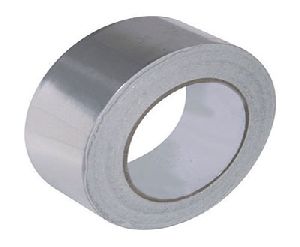
Aluminium Foil Tapes
Aluminium foil (or aluminum foil), often referred to with the misnomer tin foil, is aluminium prepared in thin metal leaves with a thickness less than 0.2 mm (7.9 mils); thinner gauges down to 6 micrometres (0.24 mils) are also commonly used. In the United States, foils are commonly gauged in thousandths of an inch or mils. Standard household foil is typically 0.016 mm (0.63 mils) thick, and heavy duty household foil is typically 0.024 mm (0.94 mils). The foil is pliable, and can be readily bent or wrapped around objects. Thin foils are fragile and are sometimes laminated to other materials such as plastics or paper to make them more useful. Aluminium foil supplanted tin foil in the mid 20th century.Annual production of aluminium foil was approximately 800,000 tonnes (880,000 tons) in Europe and 600,000 tonnes (660,000 tons) in the U.S. in 2003. Approximately 75% of aluminium foil is used for packaging of foods, cosmetics, and chemical products, and 25% used for industrial applications (e.g. thermal insulation, cables and electronics). It can be recycled.
...more
Transparent Plain Tape

Reinforced Packaging Tape

Bopp Tapes

Masking Tape

Foil Paper

Self Adhesive Tapes

Plain Brown Tape

Plain Cello Tape
Be first to Rate
Rate ThisOpening Hours